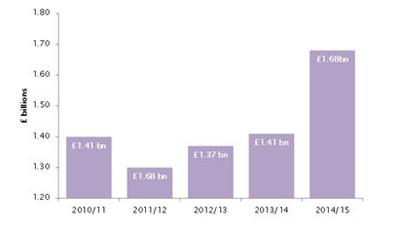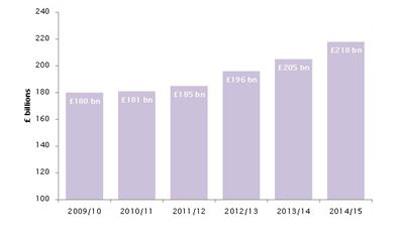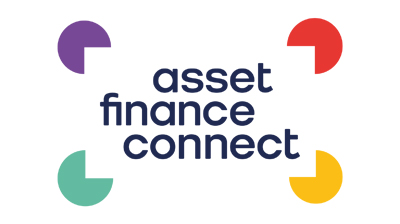Tristan Watkins, UK country manager for BNPLS (pictured below) explained that construction companies have dealt with the sudden strain on cash created by the sharp pick-up in orders by making more use of leasing to fund their expansion.
He said: “Construction companies increased the amount of finance raised through leasing by 19% in the last year to £1.68 billion*, up from £1.41 billion the previous year. The capital equipment acquired has enabled them to take on an expanding pipeline of new building projects without straining their cashflow or depleting their cash cushion."
Watkins stressed that companies that cannot properly finance the expansion needed to deal with a recovery in orders can find themselves vulnerable to sudden cashflow shocks. This is why many insolvency practitioners say that economic recovery can be almost as dangerous to some businesses as a recession.
“The construction sector,” he added, “generated £74.6 billion in new build projects orders in 2014, up from £65.4 billion in 2009, illustrating the scale of the expansion in capacity needed. Many construction companies had cut capital investment during the economic downturn and now need to replace obsolete equipment and machinery**
BNPLS notes that residential construction companies have increased their use of leasing most sharply, up by 52% from £17.8 million to £27.1 million in the last year. The turnover of residential construction companies has grown by 21% to £20.3 billion over the same period, from £16.8 billion.
Residential construction companies turnover is expected to increase further as a result of the housing shortage and government support for first time buyers, such as through the ‘Help to Buy’ scheme and new ‘Help to Buy’ ISAs.
Commercial construction companies have also expanded their use of leasing, up by 47.3% from £261 million to £385 million of finance.
Plant and equipment hire companies, also heavy users of leasing, have increased their use of leasing by 13.4%, up to £513 million in 2014/15, from £456 million in 2013/14.
Watkins said that this subsector is a bellwether of the need for more machinery in construction as companies hire equipment when they have multiple projects underway that cannot be resourced internally.
He highlighted the increased volume of big projects underway nationwide, including; the Battersea Power Station redevelopment; ‘The Scalpel’ skyscraper in the City; and the Birmingham Arena Central project which will house HSBC’s new UK retail and business banking headquarters.
“These figures show how important leasing is to the construction sector; it gives firms the flexibility to manage their cash flow during difficult periods, and to scale up their capacity quickly.
“UK construction firms are now seeing high levels of demand, and need to be able to access the machinery they need to complete projects efficiently. Leasing is helping them to deliver new homes, new commercial buildings and infrastructure, and ultimately create new jobs.”
Call for clarity on Annual Investment Allowance
BNPLS calculates that many construction companies’ investment plans will be affected by uncertainty over the future size of the Annual Investment Allowance (AIA) tax relief. This temporarily stands at £500,000, dependent on the equipment bought being on site and ready for use by 31 December.
However, in the March Budget, the UK chancellor said that the new AIA limit will not be determined until the autumn. This means that any company planning to purchase large or complex equipment will need to place an order now, or risk missing out on tax relief if the new AIA limit is set much lower.
Tristan Watkins added: “The construction industry will play a vital part in providing the new housing that all the major parties agree is desperately needed. For construction businesses to make the investment required to deliver those projects, they need to know what sort of tax environment they will be operating in. That makes providing clarity on the future of the Annual Investment Allowance an important priority for whatever government is in place after May.”
The AIA can be claimed for purchases made through hire purchase contracts and certain finance leasing arrangements. Leasing equipment involves regular fixed costs, helping to ease cash flow, and will not impact on a business’ other credit lines, enabling it to borrow money when needed in the future.
Lease funding can also generally be accessed more quickly than other forms of lending, helping to ensure that that businesses will be able to obtain equipment in time to qualify for this year’s AIA.
Leasing finance for construction firms has jumped in the UK as major projects come back on stream 
Leasing finance is helping to drive rising turnover in the construction sector
*Based on company accounts in the 12 months to 31 March 2015.
**Source: ONS Output in the Construction Industry, January 2015 and New Orders, Quarter 4 October to December 2014







